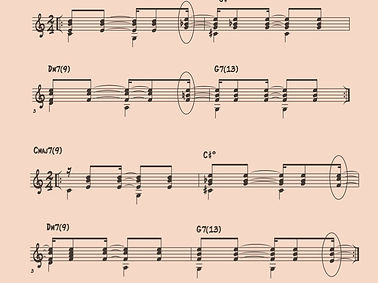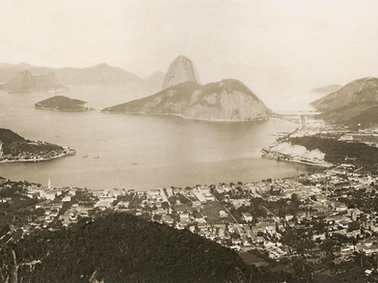
Five Preludes by H. Villa-Lobos: "Imaginary Narratives and New Interconnected Order"
As his last collection written for solo guitar in 1940, the Five Preludes represents Heitor Villa- Lobos’ compositional maturity in his music for this instrument. Composed more that a decade after the Twelve Studies, the preludes symbolize the solidification of his creative identity through the combination of distinct elements; from Baroque and French Impressionism to the Brazilian urban tradition of the Choro and folkloric cultural manifestations. In a conjunction between his European classical influences and the legacy of street musicians from Rio de Janeiro, Villa- Lobos outlines typical landscapes from his native country: the Amazon forest wilderness and the indigenous people, the culturally effervescent Rio de Janeiro of the first half of the twentieth century and its social archetypes, the resilient struggle to survive endured by inhabitants of the Sertão (arid and dry areas in Central and Northeastern regions of Brazil). Redefining social, cultural and folkloric aspects with a personal and original appropriation of typical elements. Each of the preludes are individual portraits of the many facets of Brazilian reality as a country and as a nation. One of the main objectives of this paper is to provide extra-musical information regarding the uniqueness of these portraits, observing each of the subtitles and dedications with a deeper and more meaningful consideration. Linked with melodic-harmonic analysis and rhythmic reductions, the subtitles will serve as a starting point for building a imaginary narrative to enrich interpretation. In addition to embracing these homages to an interpretative benefit, I also suggest a new order for the performance of the preludes as an interconnected multi- movement work, in the final section of this workshop. The new order presents a more balanced macro-tonal architecture and reflects a chronological disposition of the musical portraits in relation to the history of Brazil and its social and cultural development.
Brazilian Rhythms for Guitar
There is a deep rhythmic complexity in all Brazilian Popular Music, from either Folkloric or urban origins. This complexity is the result of several different patterns or elements that happen simultaneously, usually executed by percussion instruments.
The guitar is an instrument that allow us to reproduce such polyphony, determining the most important components of each style (with the characteristic articulations), to create a synthesis of two or more percussion instruments in the right hand - in Portuguese, this is informally called “Levada”.
In this course, we will learn different levadas: “Levada de Samba”, “Levada de Choro”, “Levada de Frevo” and so on, always analyzing what is happening in the percussion section, and bringing this information to the right hand execution. The “Samba” is maybe the best gateway for the vast rhythmic universe of Brazilian music. It features basic fundaments that are present in the majority of styles: the syncopation and the polyphony between low and treble lines.


History of Brazilian Music
The history of Brazilian music represents the evolution of Brazil as country and its cultural characteristics. In a journey that begins in the early nineteenth century, we'll explore a variety of genres and rhythms, observing their origins, musical elements and their transformation over the centuries.
